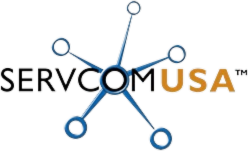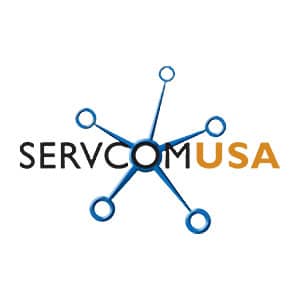5 Best Practices Every Nonprofit Needs To Follow
Nonprofits struggle with many challenges that traditional enterprise-based corporations do not, given that they often operate on the bare minimum of resources, staff, and volunteers.
While you’re likely grateful for every last person who gives of their time and talent to assist in the organization’s efforts, they don’t always have all of the skill sets you need to successfully run the operation. This often means that you have to pick up the slack – but everyone has their limitations.
This is why strategy is so important for organizations like yours. The better use you make of the available resources, the more you can achieve. Whether it’s your budget, your technology, or your people, you need to follow proven best practices to optimize your efforts.
Top 5 Best Practices You Need To Follow At Your Nonprofit
1. Align IT With You Overall Goals
Just like your staff, technology is a resource in which you invest. You wouldn’t hire someone to work at your nonprofit without finding out what they can do, and figuring out where best they would fit in the organization, right?
It should work the same way with your technology. It’s critical that you align technology to your organizational goals so that you’re not wasting money or technology you’ve already bought.
But, how do you know what the right technology is? You could do the homework yourself. That’s assuming you have the time to do so, and a sufficient understanding of technology to do so.
On the other hand, the easiest way is to ask an IT company that has experience working with nonprofits. We can provide an IT assessment that will examine the technology you use and what’s lacking in relation to your culture, process, and financial requirements. This will generate greater value for your organization while decreasing risk.
2. Increase Communication With The Public
Given how much your nonprofit interacts with the public, both in terms of the support it delivers and the funds it receives, transparency should be a priority. IT can help you do promote that – advances in modern technology have made high-quality digital cameras very affordable, allowing you to capture your team’s efforts and share them with the world. A robust website, in combination with social media platforms, can act as a modern PR office, connecting you with your community and new donors.
3. Make Use Of The Cloud
Moving to the cloud is as necessary as it is challenging. Like many other nonprofits, you may still be relying on extremely outdated technology. This could be as a way to save money, or it could be simply out of a desire to stick with what you know. However, the reality is that upgrading doesn’t necessarily have to be expensive or difficult.
With today’s newer, cloud-based and more flexible IT infrastructure solutions, your nonprofit can have the technology you need at a fraction of the cost of purchasing it. With an IT company’s assistance, your team can harness the strategic advantages offered by the cloud — efficiency, agility, and scalability — without taking on any risks that come with a poorly planned and executed migration.
4. Track Finances Carefully
Obviously, the backbone of any effective nonprofit is its funding. The more donations you receive, and the better you make use of those funds, the better. This all starts from a place of planning and knowledge.
One area of your budget that could be updated is your IT expenditures. For example, migrating to the cloud (as explored above), offers many budget-friendly advantages. By working with an IT company, you can maintain control of your data, and still take advantage of the change from CapEx to OpEx. Whereas CapEx — on-premise IT solutions — is paid for upfront and brings in a gradual return over the following months and years, OpEx is “pay-as-you-go”. You pay for a cloud solution month by month, which vastly reduces the window between investment and return.
5. Strategize Cybersecurity
Cybersecurity cannot be overlooked – improperly secured technology can put your donors, your mission and yourself at risk.
Case in point – in the final weeks of 2019, a number of non-profits were forced to pay out half a million dollars to cybercriminals. The Stickley Museum at Craftsman Farms in Parsippany, the Shakespeare Theatre of New Jersey in Madison, and the Museum of Early Trades and Crafts, also in Madison, were all victims of a ransomware attack that targeted their shared IT company.
That’s why your cybersecurity is so important. The best way to approach it is with a comprehensive plan. It’s essential that you determine exactly what data or security breach regulations could affect you. You need to know how to respond to data loss. All employees and contractors should be educated on how to report any loss or theft of data, and who to report to.
Data loss can expose you to costly state and federal regulations and litigation. You must be able to launch a rapid and coordinated response to a data breach to protect your reputation.
Your plan should include input from all departments that could be affected by a cybersecurity incident. This is a critical component of emergency preparedness and resilience. It should also include instructions for reacting to destructive malware. Additionally, departments should be prepared to isolate their networks to protect them if necessary.
Like this article? Check out the following blogs to learn more:
What Happens If I Keep Running Windows 7?
No Quicker Way To Let Ghouls Into The Network
Microsoft Windows 7 & Windows Server 2008 Are Coming To An End


